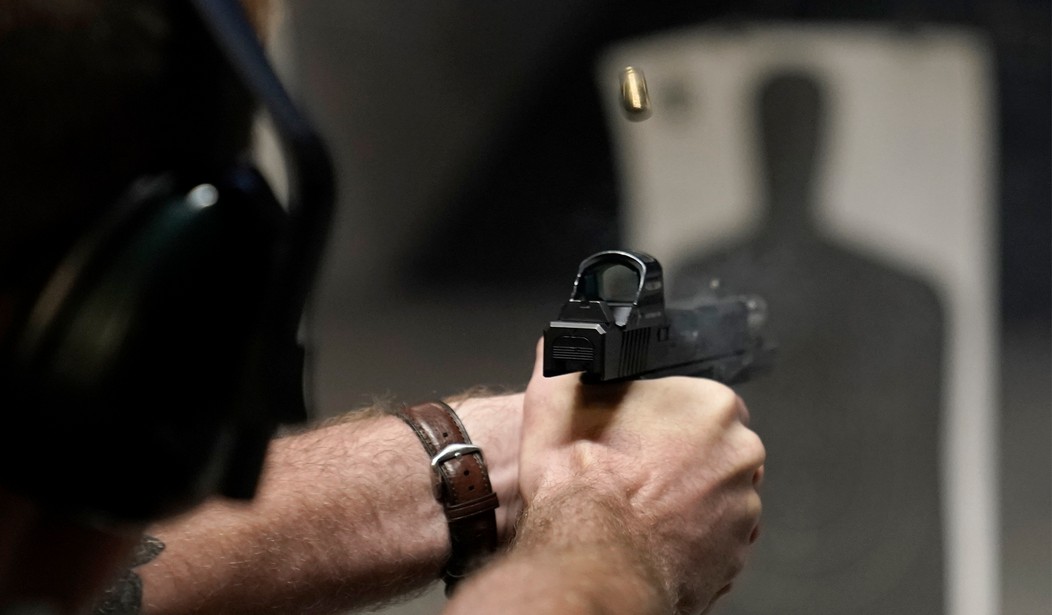As my colleague Ranjit Singh highlighted on Monday, one of the most important parts of U.S. District Judge Roger Benitez’s opinion striking down California’s ban on “large capacity” magazines was his thorough debunking of the state’s claim that a ten-round magazine capacity is just fine, given that the “average” number of defensive gun uses results in just 2.2 rounds being fired. As Benitez explained, that number came from a researcher named Lucy Allen, who was one of the witnesses for the state of California, but the judge found major fault with her data.
Without investigatory reports, the State’s expert turns to anecdotal statements, often from bystanders, reported in news media, and selectively studied. She indicates she conducted two studies. Based on these two studies of newspaper stories, she opines that it is statistically rare for a person to fire more than 10 rounds in self-defense and that only 2.2 shots are fired on average. Unfortunately, her opinion lacks classic indicia of reliability and her two studies cannot be reproduced and are not peer-reviewed.
“Reliability and validity are two aspects of accuracy in measurement. In statistics, reliability refers to reproducibility of results.” Her studies cannot be tested because she has not disclosed her data. Her studies have not been replicated. In fact, the formula used to select 200 news stories for the Factiva study is incomprehensible. […]
For one study, Allen says she conducted a search of stories published in the NRA Institute for Legislative Action magazine (known as the Armed Citizen Database) between 2011 and 2017. There is no explanation for the choice to use 2011 for the beginning. After all, the collection of news stories goes back to 1958. Elsewhere in her declaration she studies mass shooting events but for that chooses a much longer time period reaching back to 1982. Likewise, there is no explanation for not updating the study after 2017.
[…] details are completely absent. Allen does not list the 736 stories. Nor does she reveal how she assigned the number of shots fired in self-defense when the news accounts use phrases like “the intruder was shot” but no number of shots was reported, or “there was an exchange of gunfire,” or “multiple rounds were fired.” She includes in her 2.2 average of defensive shots fired, incidents where no shots were fired. […] She does not reveal the imputed number substitute value that she used where the exact number of shots fired was not specified, so her result cannot be reproduced. […] For example, this Court randomly selected two pages from Allen’s mass shooting table: pages 10 and 14. From looking at these two pages (assuming that the sources for the reports were accurate and unbiased) the Court is able to make statistical observations, including the observation that the number of shots fired were unknown 69.04% of the time.
In other words, this data point is absolute trash. So it’s extra amusing to see the state of Oregon rely on these garbage statistics in defense of Measure 114, the narrowly approved voter referendum that imposes the same magazine capacity limitations as California’s challenged law (in addition to a permit-to-purchase scheme that could result in a defacto 30-day waiting period on handgun purchases). Closing arguments in a state-level lawsuit challenging Measure 114 were held in the Harney County courtroom of Judge Robert S. Raschio on Monday, and Oregon attorneys relied heavily on the now-debunked claim to make their case.
The two Harney County gun owners who filed the challenge in court, as well as two rural Union and Harney county sheriffs, testified about their preferences for large-capacity magazines for self-defense to protect their livestock from coyotes, or to thwart attacks from wolves and bears.[Senior Assistant Attorney General Harry B.] Wilson urged the judge to discount their “limited anecdotal evidence” and instead rely on the testimony of a state’s witness, who calculated that a review of the NRA’s Armed Citizen defense data shows the average rounds fired in self-defense is no more than 2.3 rounds.[Plaintiffs’ attorney Tony L.] Aiello said the database only captures self-defense shootings that are reported.“Statistics mean nothing to the person whose doors were kicked in by more than one attacker. Statistics mean nothing to the person who hears the howl of a wolf or coyote, and statistics mean nothing to the officer whose ability to defend himself and others differs based on whether he is punched in or punched out for the day,” he argued.He highlighted the testimony of Oregon State Police Supt. Casey Codding, who said his troopers typically carry 52 rounds on them on duty — 17 rounds and one in the chamber in their on-duty handgun with two additional 17-round magazines.“Defendants have put on zero evidence showing that restricting a regular law-abiding Oregonian from the best arms for self defense will further public safety in any way,” Aiello said.
Judge Benitez provided several examples of defensive gun uses in which more than ten rounds were fired in his opinion in Duncan v. Bonta, further making the point that arbitrarily restricting magazines to no more than ten rounds could indeed play a role in whether someone is able to successfully fend off an attack or assault against them. I’m curious to see if Judge Raschio will cite Benitez in his own decision to grant or deny a permanent injunction against Measure 114, which he indicated will come sometime in the next 60 days.
No matter how Raschio rules, the case will be appealed to the Oregon Supreme Court, so he won’t be the last judge in the state to weigh in on the constitutionality of the ballot measure. Meanwhile, plaintiffs in a lawsuit filed in federal court have appealed to the Ninth Circuit after U.S. District Judge Karin J. Immergut rejected a request for a temporary restraining order earlier this year in a bizarre ruling that contended the now-banned magazines “are not commonly used for self-defense, and are therefore not protected by the Second Amendment.”
Raschio, on the other hand, has already granted a temporary restraining order that has kept the measure on hold, and I’ve seen nothing from the most recent trial that makes me think he’s changed his mind about the constitutionality of Oregon’s newest gun control laws. I hope we don’t have to wait two months for his decision, but my guess is that when it does come out gun owners and Second Amendment advocates will have plenty to cheer… and we’ll be one step closer to SCOTUS finally resolving what should be a long-settled debate.









Join the conversation as a VIP Member